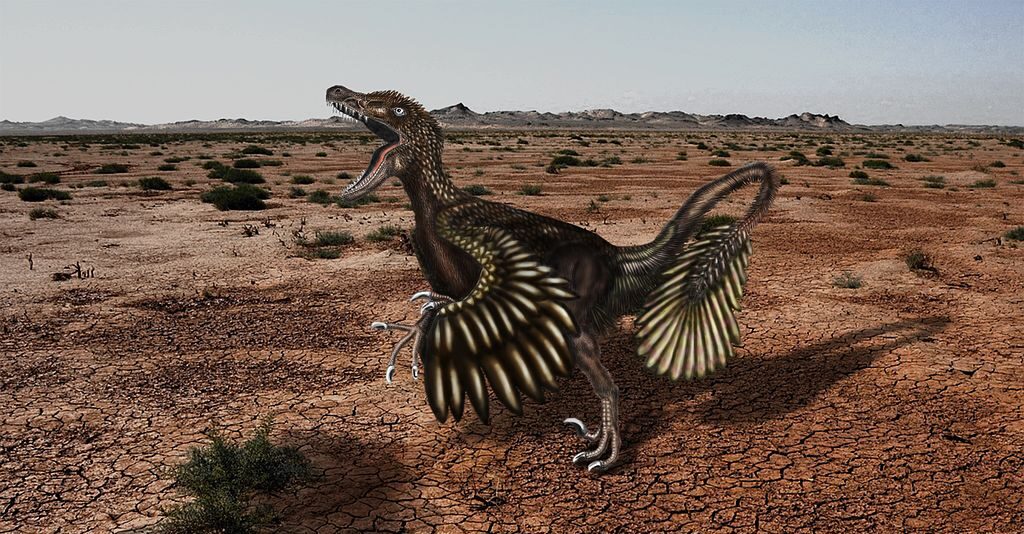When Steven Spielberg’s “Jurassic Park” hit theaters in 1993, it forever changed how we view extinct dinosaurs, particularly the clever, kitchen-invading Velociraptors that hunted in packs and outwitted humans. These cinematic portrayals sparked widespread fascination with raptor intelligence, launching debates among paleontologists and dinosaur enthusiasts alike. But how much of what we think we know about raptor intelligence is based on scientific evidence versus Hollywood imagination? The question of dinosaur intelligence, especially regarding the dromaeosaurids (the proper term for what we commonly call “raptors”), remains one of paleontology’s most intriguing and contentious discussions. This article explores the current scientific understanding of raptor cognition, examining the evidence for their intelligence and comparing it with modern animals to determine just how smart these prehistoric predators were.
The Evolutionary Context of Raptor Intelligence

To understand raptor intelligence, we must first place them in their proper evolutionary context. Dromaeosaurids were a family of feathered, sickle-clawed theropod dinosaurs that lived during the Cretaceous period, approximately 145 to 66 million years ago. Their closest living relatives are birds, which evolved from small theropod dinosaurs. This evolutionary relationship is crucial because it provides a framework for understanding raptor cognition. The avian brain evolved from the same ancestral form as raptor brains, meaning birds’ cognitive capabilities can offer clues about raptor intelligence. Modern birds demonstrate remarkable problem-solving abilities, tool use, and social learning, suggesting that their dinosaur ancestors potentially possessed the neurological foundation for complex behaviors. This evolutionary connection represents one of the strongest arguments for sophisticated raptor cognition, though exactly how intelligent they were remains hotly debated among scientists.
Brain Size and Encephalization Quotient

One of the primary methods paleontologists use to estimate dinosaur intelligence is examining endocasts—natural or artificial casts of brain cavities—to determine brain size and structure. Relative brain size, measured as the encephalization quotient (EQ), compares brain mass to body mass and serves as a rough indicator of potential cognitive abilities. Analyses of dromaeosaurid endocasts reveal they possessed relatively large brains for their body size compared to other dinosaurs, with EQs potentially approaching those of some modern birds and reptiles. Troodontids, close relatives of dromaeosaurids, had some of the highest EQs among dinosaurs, suggesting enhanced cognitive potential in this evolutionary branch. However, scientists caution against oversimplification, as modern research shows that absolute brain size, specialized brain regions, neural density, and connectivity are equally important factors in determining intelligence. While raptors’ relatively high EQs suggest greater cognitive capabilities than many dinosaur contemporaries, they likely fell short of the most intelligent modern mammals and birds.
Brain Structure and Specialization
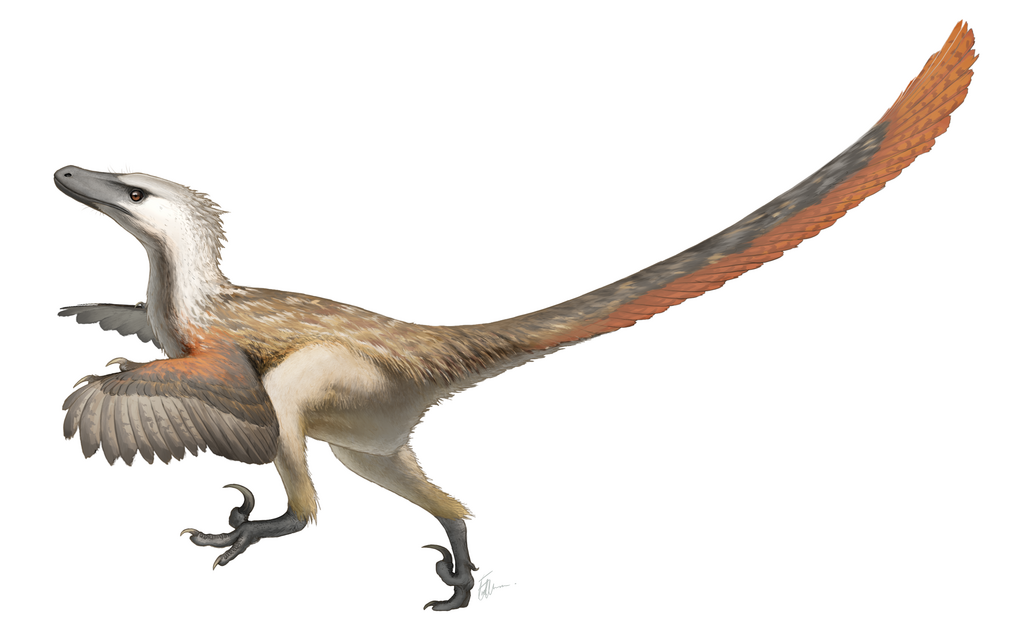
Beyond simple measurements of brain size, paleontologists have gained valuable insights by studying the structure of raptor brains through endocasts. These analyses reveal that dromaeosaurids possessed enlarged cerebral hemispheres and well-developed optic lobes, suggesting enhanced sensory processing and potentially higher cognitive functions. Particularly noteworthy is the expansion of the cerebellum, a brain region associated with motor coordination and procedural learning, which would have been crucial for these agile predators. The olfactory bulbs—brain regions responsible for processing smell—were moderately developed in most raptor species, indicating a balanced reliance on different senses. Some species, particularly Velociraptor and its close relatives, show evidence of an expanded cerebrum, the brain region associated with complex behaviors and problem-solving in modern animals. This neuroanatomical evidence suggests that raptors possessed brain specializations that could have supported sophisticated behaviors beyond basic instinctual responses, though precisely how these brain structures functioned remains speculative without the ability to observe living specimens.
The Social Intelligence Hypothesis
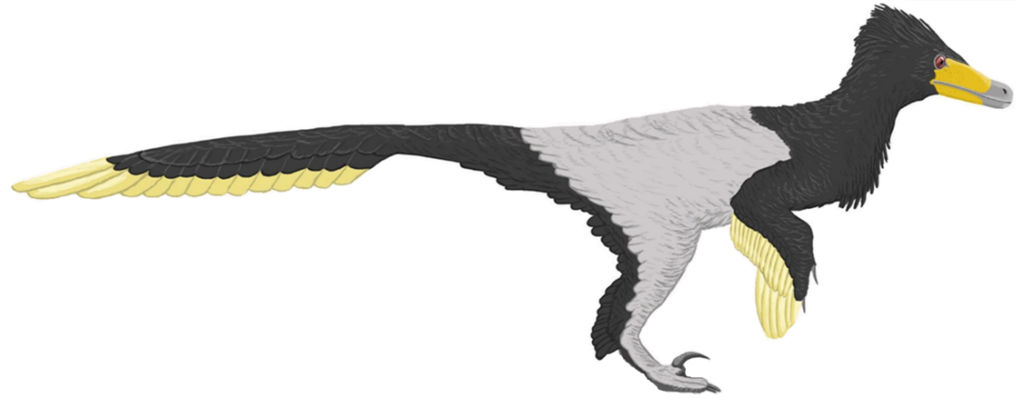
One of the most compelling arguments for advanced raptor intelligence comes from evidence suggesting social behavior. Multiple fossil sites across Mongolia, China, and North America have revealed dromaeosaurid specimens preserved nearby, potentially indicating social groupings. The famous “fighting dinosaurs” specimen—a Velociraptor locked in combat with a Protoceratops—demonstrates sophisticated hunting techniques that some paleontologists interpret as evidence of coordinated hunting strategies. Social living often drives the evolution of intelligence, as navigating complex social hierarchies and cooperative behaviors requires advanced cognitive abilities. This “social intelligence hypothesis” has been used to explain the evolution of intelligence in primates, dolphins, and certain birds. If raptors indeed lived and hunted in coordinated groups, as some evidence suggests, they would have required neural adaptations for social learning, communication, and possibly even theory of mind—understanding what others might be thinking. However, the fossil evidence for social behavior remains circumstantial, and some scientists argue that apparent group associations may result from preservation bias or post-mortem accumulation rather than genuine social structures.
Hunting Strategies and Problem-Solving
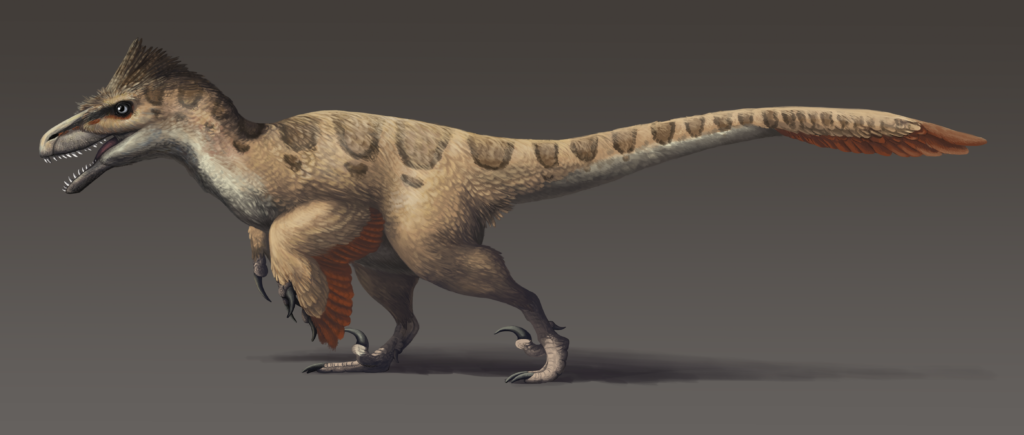
The hunting adaptations of dromaeosaurids provide another window into their potential intelligence. These dinosaurs possessed a suite of specialized features—including recurved teeth, grasping hands with opposable digits, and the iconic sickle-shaped foot claw—that suggest sophisticated predatory behaviors. Biomechanical studies indicate that rather than slashing prey as popularly depicted, raptors likely used their foot claws to pin down struggling prey while delivering precision bites. This hunting style would have required advanced spatial awareness, timing, and motor control. Trace fossils and bite marks on prey species show evidence of strategic attacks targeting vulnerable areas, suggesting raptors understood their prey’s anatomy and vulnerabilities. Some paleontologists argue that successfully hunting large prey relative to their body size would have required problem-solving abilities and potentially cooperative strategies. The cognitive demands of being a successful predator—tracking prey, predicting movements, adapting tactics based on circumstances, and potentially coordinating with pack members—would have selected for intelligence throughout raptor evolution, potentially driving the development of more sophisticated brains.
Parental Care and Learning

Evidence from closely related dinosaur groups suggests dromaeosaurids likely exhibited parental care, which has significant implications for their cognitive abilities. Fossil nests of oviraptorids (close relatives of dromaeosaurids) show adults positioned over clutches of eggs in brooding positions, indicating dedicated parental attention. Additionally, growth patterns in young dromaeosaurids suggest an extended period of development, providing opportunity for parental teaching and juvenile learning. Extended periods of dependency are often associated with more complex cognitive development, allowing young animals to learn critical survival skills through observation and practice rather than relying solely on instinct. The presence of parental care would have created selective pressure for learning capabilities in both adults and offspring, potentially driving the evolution of more sophisticated neural architectures for memory, social learning, and problem-solving. If young raptors learned hunting techniques from adults rather than relying entirely on innate behaviors, this would represent a significant level of cognitive flexibility beyond what is typically attributed to reptiles and would place them closer to birds and some mammals in terms of learning capabilities.
Comparing Raptors to Modern Animals

To contextualize raptor intelligence, scientists often draw comparisons with modern animals whose cognitive abilities are better understood. Based on brain-to-body size ratios and neuroanatomy, many paleontologists suggest that dromaeosaurids possessed cognitive abilities comparable to modern crocodilians or some birds. Crocodilians, despite their reputation as primitive creatures, demonstrate sophisticated behaviors including tool use (balancing sticks on their snouts to lure nesting birds), cooperative hunting, and long-term memory. Among birds, corvids (crows, ravens, and their relatives) and parrots display remarkable problem-solving abilities, self-awareness, and social learning that might represent the upper limits of what raptor cognition could have achieved. However, some researchers caution against direct comparisons, noting that dinosaur brains likely had fundamental differences from both modern reptiles and birds. The unique evolutionary pressures that shaped raptor cognition may have produced intelligence that doesn’t neatly align with any modern animal, representing instead a distinctive cognitive adaptation suited to their specific ecological niche in the Mesozoic world.
The Limitations of Fossil Evidence
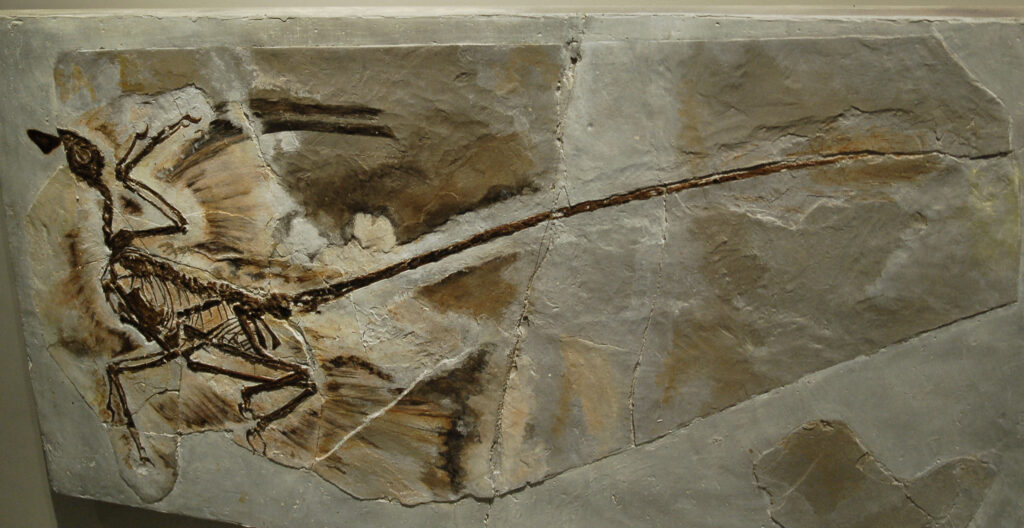
Despite the compelling nature of various lines of evidence, scientists face significant limitations when attempting to determine dinosaur intelligence. Fossilization preserves only hard tissues, meaning the actual brain tissue of dromaeosaurids has long since decomposed, leaving only the impression of brain shape in the skull cavity. This limitation forces paleontologists to rely on endocasts that provide information about brain size and gross anatomy but reveal little about neural density, connectivity, or specialized neurological structures that are crucial for understanding cognitive capabilities. Additionally, behavior rarely fossilizes, leaving scientists to infer cognitive abilities from indirect evidence like anatomical adaptations, trackways, and preserved body positions. The fragmentary nature of the fossil record means that our understanding of raptor intelligence is based on a tiny sample of the millions of individuals that existed over tens of millions of years. These limitations introduce unavoidable uncertainty into any discussion of dinosaur cognition, requiring scientists to acknowledge that definitive conclusions about raptor intelligence remain elusive despite accumulating evidence suggesting they were likely more cognitively sophisticated than traditionally assumed.
The Hollywood Effect on Raptor Perception

Popular media, particularly the “Jurassic Park” franchisehaveas profoundly influenced public perception of raptor intelligence, often in ways that diverge from scientific evidence. The films portray Velociraptors as human-sized masterminds capable of complex cooperative hunting, strategic thinking, and even opening doors—representations that dramatically exaggerate likely cognitive abilities. These cinematic raptors were based more on Deinonychus, a larger North American relative of the turkey-sized Velociraptor, and were depicted without the feathers that scientific evidence indicates covered these dinosaurs. Interestingly, the fictional portrayal has both helped and hindered scientific understanding, sparking public interest in paleontology while simultaneously creating misconceptions that scientists must repeatedly address. The “Hollywood effect” exemplifies how cultural representations can become more influential than scientific evidence in shaping public understanding. Many paleontologists acknowledge feeling both appreciation for the increased attention to their field and frustration at the need to constantly distinguish between evidence-based conclusions and fictional portrayals when discussing raptor intelligence with non-specialists, illustrating the complex relationship between popular culture and scientific discourse.
Recent Discoveries Changing the Picture

The field of paleontology continues to evolve rapidly, with new fossil discoveries and analytical techniques frequently refining our understanding of raptor cognition. Recent finds in China’s Liaoning Province have yielded exceptionally preserved specimens with feather impressions and sometimes even soft tissue remnants, providing unprecedented insights into raptor anatomy and ecology. Advanced imaging technologies, including synchrotron radiation and neutron tomography, now allow scientists to examine fossil brain cases in extraordinary detail without damaging specimens, revealing previously undetectable neural structures. Comparative studies incorporating a broader range of modern animals have created more nuanced frameworks for interpreting the neurological capabilities of extinct species. Perhaps most significantly, discoveries of transitional fossils bridging the evolutionary gap between dinosaurs and birds have strengthened our understanding of the neurological continuity between these groups, suggesting that many cognitive abilities present in modern birds may have deep evolutionary roots in their dinosaurian ancestors. These ongoing advances suggest that our understanding of raptor intelligence remains preliminary, with each discovery potentially shifting the consensus on just how sophisticated these prehistoric predators were.
The Case for Higher Intelligence

Proponents of higher raptor intelligence point to multiple converging lines of evidence suggesting cognitive sophistication beyond that of typical reptiles. The evolutionary relationship with birds places raptors in a lineage that ultimately produced some of the most intelligent non-mammalian animals on Earth, suggesting the neural foundation for advanced cognition was present in their common ancestry. Biomechanical analyses of raptor anatomy reveal adaptations requiring precise sensorimotor control and spatial awareness, particularly in the context of predation. The enlarged brain regions associated with sensory processing, motor coordination, and potentially higher cognition suggest neural specialization supporting complex behaviors. Evidence of potential social living and pack hunting, though still debated, would require substantial cognitive abilities for coordination and communication if confirmed. Paleontologists supporting this view argue that when all available evidence is considered collectively, it points to dromaeosaurids as cognitive standouts among Mesozoic animals—not achieving the intelligence levels of modern corvids or primates, but potentially surpassing most contemporary dinosaurs and possibly approaching the cognitive capabilities of modern crocodilians and some birds in specific domains related to hunting and social interaction.
The Case for More Modest Intelligence

Despite evidence suggesting enhanced cognition, many paleontologists advocate for a more conservative interpretation of raptor intelligence. These scientists emphasize that relative brain size alone is an imperfect predictor of intelligence, noting that modern animals with similar encephalization quotients display widely varying cognitive abilities. They point out that apparent evidence for social behavior and coordinated hunting remains circumstantial, with alternative explanations possible for most fossil assemblages showing multiple individuals. Some researchers highlight that successful predation doesn’t necessarily require high intelligence, as evidenced by modern reptilian predators that effectively capture prey through innate behaviors rather than learned strategies. Skeptics also note that many of the specialized hunting adaptations in raptors could function effectively through instinctual programming rather than requiring complex cognition or problem-solving. Those arguing for more modest intelligence estimates suggest that dromaeosaurids were likely somewhat more cognitively advanced than typical reptiles due to their evolutionary relationship with birds and their predatory lifestyle, but probably did not possess the sophisticated social intelligence, self-awareness, or problem-solving abilities sometimes attributed to them in popular representations or more speculative scientific interpretations.
The Scientific Consensus Today

The current scientific consensus on raptor intelligence represents a middle ground between the extremes of portraying them as reptilian automatons or bird-like geniuses. Most paleontologists agree that dromaeosaurids possessed cognitive abilities exceeding those of typical reptiles, with specialized adaptations for predatory behavior and potentially some degree of social coordination. Their evolutionary relationship to birds suggests neural complexity beyond that of more distant dinosaur lineages, though precisely how this translated to behavior remains unclear. There is broad agreement that raptor intelligence has been exaggerated in popular media, while simultaneously being underestimated in older scientific literature that compared dinosaurs primarily to reptiles rather than considering their avian connections. The consensus view acknowledges significant uncertainty due to the limitations of fossil evidence while recognizing that multiple lines of evidence point to enhanced cognitive capabilities compared to many contemporaneous dinosaurs. Rather than claiming definitive answers, most specialists emphasize that raptor intelligence likely existed on a spectrum, with different species showing varying cognitive adaptations suited to their specific ecological niches and evolutionary history—a nuanced view that acknowledges both the evidence for sophisticated behaviors and the inherent limitations in studying the minds of animals extinct for over 66 million years.
Conclusion: Intelligence Adapted to a Mesozoic World
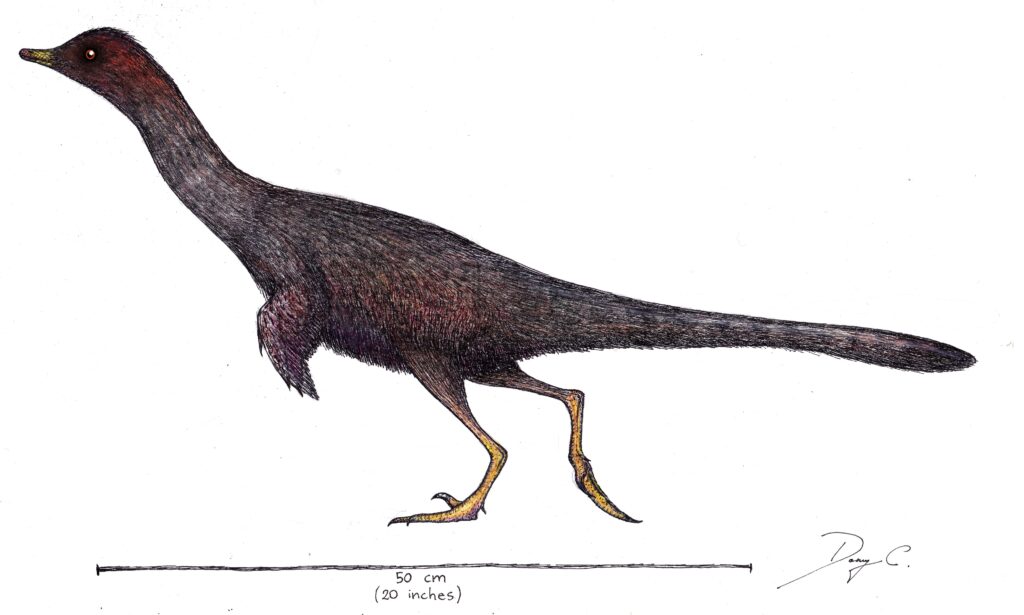
The debate over raptor intelligence ultimately reflects both the fascinating nature of these extinct predators and the significant challenges in understanding the cognitive abilities of animals known only from fossils. The evidence suggests dromaeosaurids possessed intelligence adapted specifically to their ecological niche as agile, potentially social predators in a Mesozoic ecosystem. Their brains, while not comparable to those of the most intelligent modern mammals or birds, likely supported sophisticated predatory behaviors, sensory integration, and possibly social coordination beyond what is typically associated with reptiles. Perhaps the most accurate view sees raptor intelligence not as “high” or “low” on a single scale, but as a specialized form of cognition evolved for their particular lifestyle—effective for the challenges they faced but fundamentally different from the intelligence of modern animals. As research techniques advance and new fossils emerge, our understanding of raptor cognition will continue to evolve, potentially revealing cognitive capabilities we have yet to imagine. What remains clear is that these remarkable dinosaurs were neither the super-intelligent predators of Hollywood imagination nor mindless prehistoric monsters, but sophisticated animals whose intelligence was perfectly adapted to their world—a world very different from our own, yet connected to it through the unbroken thread of evolution.

